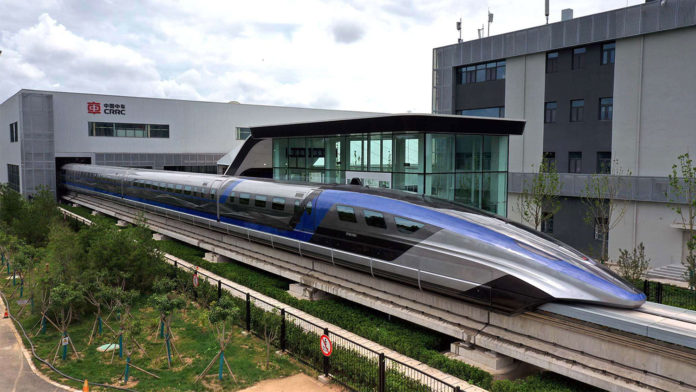China has revealed a new maglev bullet train that can reach speeds of 600 km/h (373 mph), or nearly half the speed of sound, to the public in Qingdao. Developed by the state-owned CRRC Corporation Limited (China Railway Rolling Stock Corporation), it’s considered the fastest ground vehicle on the planet.
The Maglev (abbreviation of ‘magnetic levitation’) train appears to be floating thanks to an electromagnetic force that sends it gliding above the tracks. In this way, the main force opposing the motion of the vehicle is only the friction of the air. According to the developers, in addition to its speed, the train emits low levels of noise pollution and requires less maintenance than other high-speed trains.
A prototype of the new high-speed maglev train was revealed to the media in 2019. The train is intended to fill the gap between the current ‘normal’ high-speed trains that can reach about 350 km/h (217 mph) and the aircraft that can transport passengers at 800-900 km/h (497-560 mph). At 600 km/h (373 mph), the new maglev train would take just 2.5 hours to travel from Beijing to Shanghai – a distance of more than 1000 km (620 miles). In comparison, a passenger plane does that in 3 hours and a high-speed train in 4.5-6 hours, while the overnight sleeper train takes over 15 hours.
The new ultra-high-speed train’s “whirlpool” brake system is 30% more efficient than that on Shanghai maglev train. This means, according to China’s Global Times, the new train will only take 10 km (6.2 miles) to pull up, where the current Shanghai maglev takes 16 km (10 miles). It also requires a shorter turning radius than subways, facilitating the planning of railway infrastructures in the presence of buildings.
With this presentation, China seems to reaffirm its ambition to become a global science and innovation leader. Already today, the Asian giant is a leader in rail transport: it owns 37,900 km of high-speed lines and has already implemented small-scale infrastructure for maglev trains.
Countries such as Japan and Germany are also looking to build maglev networks, although high costs and incompatibility with current railway infrastructure remain obstacles to rapid development.
